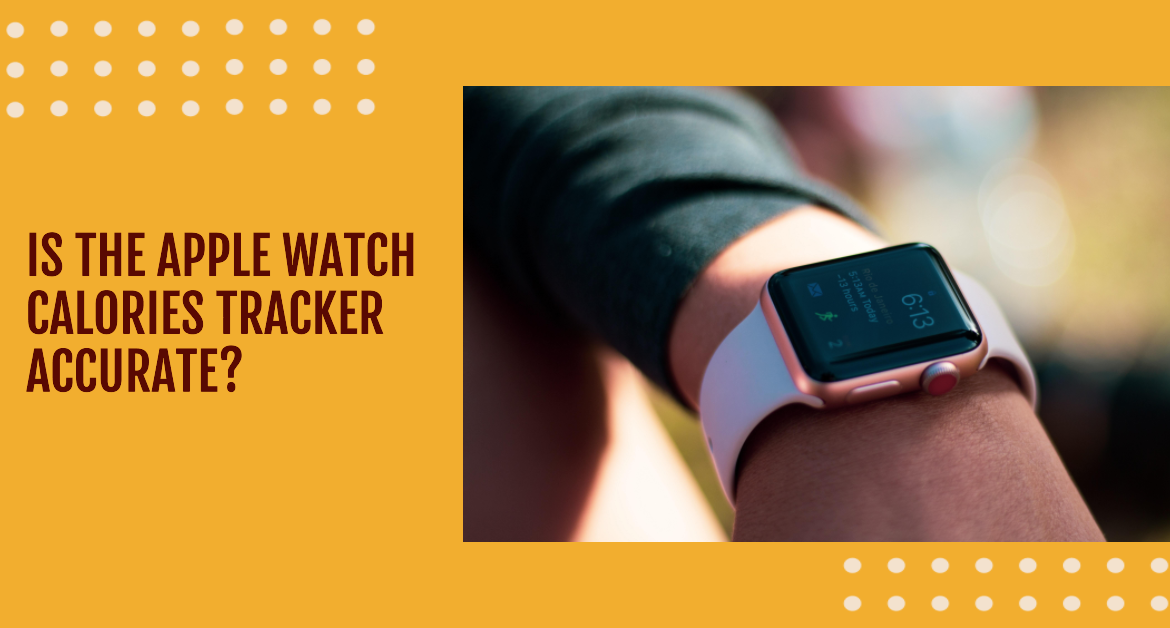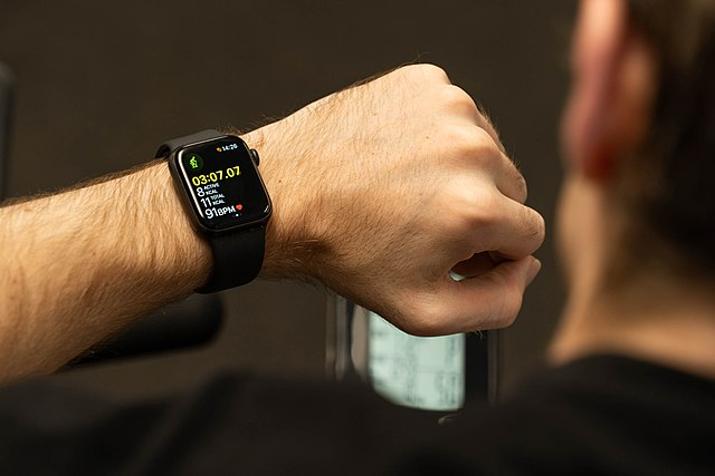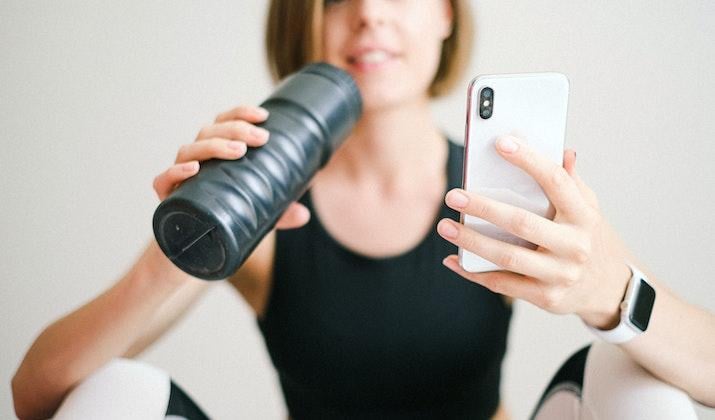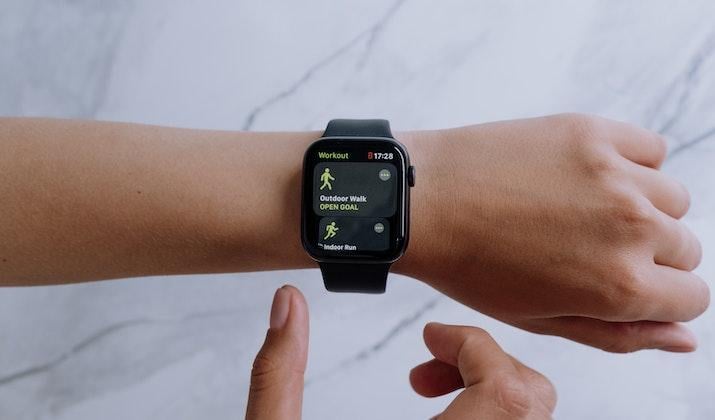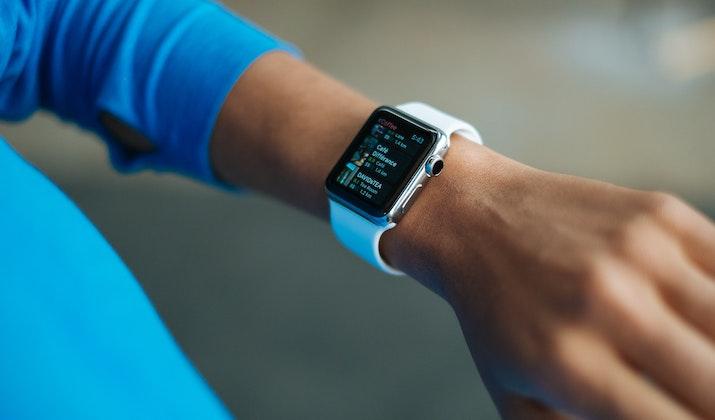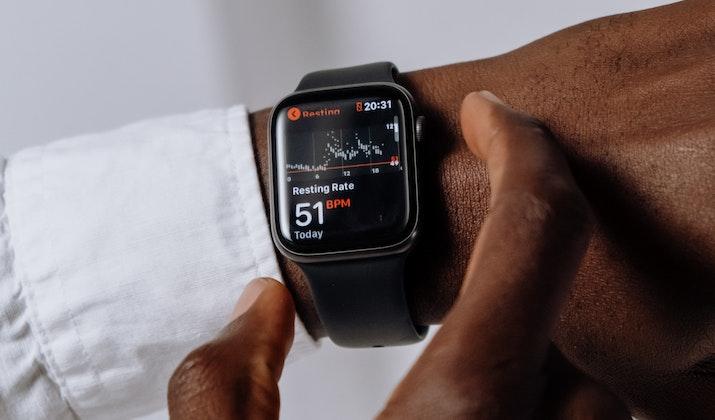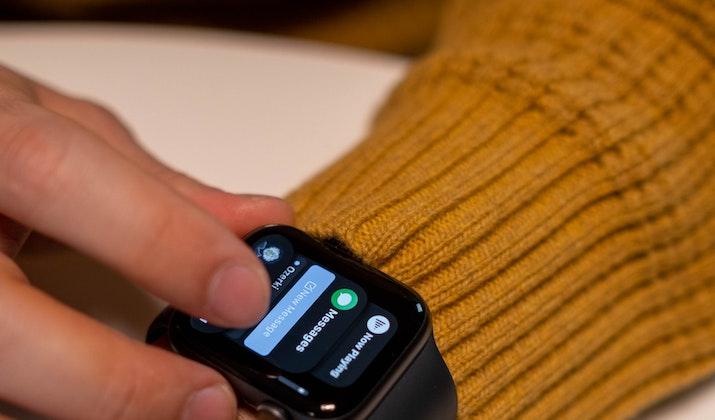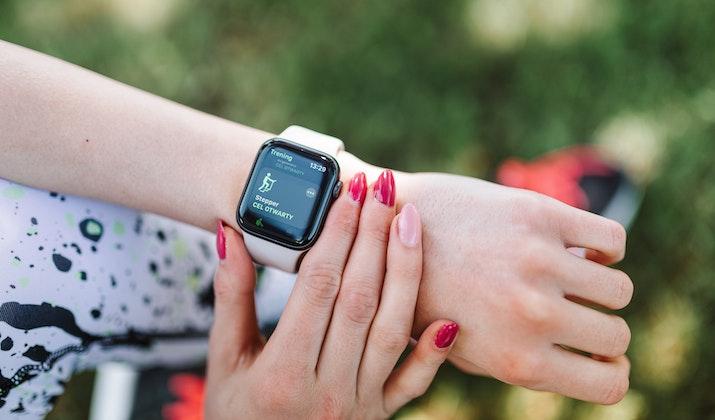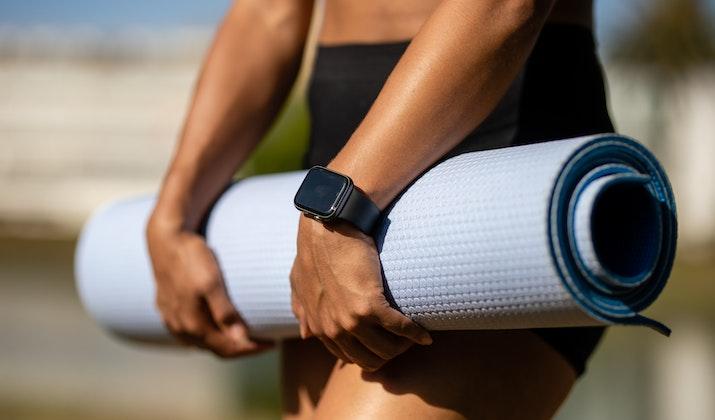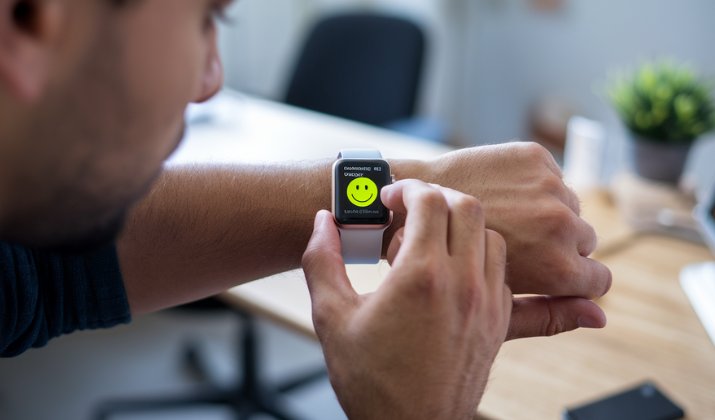The Apple Watch runs on watchOS, an operating system based on iOS but modified for smartwatches.
You can do a lot of things with an Apple Watch, including receiving calls and using various apps. However, one of the most popular use cases of the Apple Watch is as a fitness tracker, to track calories burned and other physical activities.
However, users frequently have these questions. Is the Apple Watch accurate at tracking calories? What criteria and technology does it use to track calories? What can you do to make it more accurate?
We’ll discuss all these and more in this article today.
Also Read: Is It Bad To Charge Apple Watch For Days?
Apple Watch Calorie Tracker Functionality
Alextredz, CC BY-SA 4.0, via Wikimedia Commons
The Apple Watch uses a variety of methods to track your calories.
First, it relies on data that you input into the system, such as your age, gender, height, and weight. These determine how you burn calories.
Everyone’s body is different, and everyone burns calories differently. People with more body fat burn more calories doing the same activities as people with less body fat, for example.
It’s simple logic, actually. If you weigh more, it requires more energy to move yourself, so you burn more calories.
The less you weigh, the less energy expenditure it takes to do simple things like walking or running, causing you to burn fewer calories.
In addition, the Apple Watch has various sensors that track your activity throughout the day. It can tell when you are walking and when you are standing.
Also Read: Best Apple Watch Games
Photo by Maksim Goncharenok, Pexels
Using built-in sensors and accelerometers, it can estimate the number of calories you are burning based on the physical activity you are doing. To help it determine which physical activity you are doing, you can just select it in the Workout app on your Apple Watch.
It also tracks your heart rate when you are at rest and when you are walking.
Using advanced algorithms, it combines all of the data listed above to get an estimate of how many calories you have been burning.
It’s important to underline the word “estimate.” No fitness tracker available on the market can tell you with 100% accuracy how many calories you burned.
That is because it is dependent on such a wide range of factors.
Explore: Can Apple Watch Charger Charge iPhone?
Even more than that, your movements throughout the day are not linear. If you are walking on a treadmill, the treadmill might have a built-in tracker that is designed to help you track calories burned while on the treadmill, but that’s a very specific use case scenario.
A general fitness tracker is trying to estimate the calories you are burning throughout the day. That includes all sorts of movements, not like being active on a treadmill at a steady pace for 30 minutes.
When you walk, you are not just walking. You are moving your arms, and you may be moving slightly faster or slower at certain times.
Not only can that affect the calories you burn to some extent, but fitness trackers can also misinterpret certain movements, such as hand movements, thinking they are steps.
I have seen that personally. When I use a Fitbit to track my 10,000 steps a day, it sometimes counts movements on a motorcycle as steps.
I could be in the middle of a motorcycle ride, when my Fitbit suddenly gives me a notification that I reached 10,000 steps. Obviously, it was misinterpreting my movements.
In addition, fitness trackers have been shown to be more accurate at tracking your energy expenditure during certain activities, like running or walking, compared to playing certain sports.
Regular movements are a lot easier to track than irregular movements.
If you are running, walking, jogging, or cycling at a steady pace, the fitness tracker will have an easier time estimating the true number of calories you burned.
On the other hand, if you are playing tennis, boxing, playing golf, or doing other sports or activities with irregular movements, it will be a lot harder for the watch to determine how many calories you are burning.
Fortunately, the Apple Watch is decently accurate. Out of all fitness trackers, Apple has some of the most advanced technology on the market, so let’s see how accurate its estimates are.
Also Read: How To Charge Apple Watch Without Charger?
Accuracy of Apple Watch Calorie Tracker
Photo by cottonbro studio, Pexels
We already discussed various factors that can affect the accuracy of your Apple Watch’s calorie tracking capabilities. For example, inputting your details correctly is essential.
And, as we will discuss later, ensuring a proper fit is also critical. Other factors, such as the presence of tattoos, may affect accuracy as well.
But just how accurate is the Apple Watch in general?
PractiCal on Medium conducted a comprehensive, 12-week study of Apple Watch’s calorie tracking measurements and compared them with how many calories he actually lost, measured by weighing himself.
While there have been many other studies, and this study is just one person, there haven’t been that many studies over a long term. This is what sets this study apart.
He wore his Apple Watch 22 hours every day, only taking it off to charge it. What he found was that the results were incredibly accurate.
After around 80 days, he had a calorie deficit of around 87,000 calories. His actual weight varied from Apple Watch’s measurements by just 0.4 of a pound (less than half a pound).
Of course, results can vary, and they might not be the same for everyone. Some people may experience fluctuations based on the factors we already mentioned.
For example, if they have different body fat percentages, the results might not be as accurate as they were for him. Nevertheless, this long-term study shows that Apple Watches can, at least at times, be pretty accurate, although it’s still only an estimate.
Another study was conducted with 30 healthy young adults, including 15 females. It found that the results for both heart rate tracking and energy expenditure were pretty accurate.
However, the Apple Watch did overestimate energy expenditure when worn on the arm and underestimate it when worn on the wrist. That shows that your results may vary depending on where you wear it.
Since the Apple Watch may not be wholly accurate, it’s important to exercise caution when using it. Do not rely on it entirely for health purposes.
Instead, use it as an overall estimate of how many calories you are burning. Set a goal and use the Apple Watch to try to meet it, but be aware that it might be slightly off.
Finally, use the tips later in this article to increase the accuracy of its readings.
Check Out: Best MageSafe Duo Alternatives
Comparison with Other Fitness Trackers
Comparing the Apple Watch to other fitness trackers can be a bit tricky, considering how challenging it is to get accurate data about the true accuracy of fitness trackers in general. Wide-scale studies of different wearable devices would be necessary but also particularly challenging to carry out.
That’s because, as we talk about in this article, various factors can affect the accuracy of these trackers.
They include someone’s weight, the way they walk, and even the weather. So, accurate data could be hard to come by.
One paper titled Accuracy and Acceptability of Wrist-Wearable Activity-Tracking Devices: Systematic Review of the Literature, published on PubMed, looked at different devices mentioned in the literature.
It found that the Apple Watch had an MAPE (mean absolute percentage error) of less than 10% when it came to heart rate tracking, based on two studies.
On the other hand, for energy expenditure (which is what we’re interested in for the purposes of this article), all brands had an MAPE of over 30%! That included the Apple Watch.
Other devices tracked in the studies analyzed by the paper include various Fitbit and Garmin smart wearables.
The paper concluded that the Apple Watch was pretty accurate compared to other fitness trackers for measuring your heart rate. Meanwhile, the Fitbit Charge and Fitbit Charge HR were best for measuring steps, with an MAPE of less than 25% across 20 studies.
However, when it came to energy expenditure, none of the fitness trackers could be particularly relied upon.
Photo by cottonbro studio, Pexels
Another research paper looked at 158 publications examining the accuracy of various fitness trackers available commercially, from nine different brands. It examined them in regards to step count, energy expenditure, and heart rate tracking.
It found that Apple Watch and Garmin were the most accurate when it came to heart rate tracking. Meanwhile, Fitbit, Apple Watch, and Samsung devices were the most accurate when it came to tracking step counts.
So far so good, right?
However, here’s the bad news: When it came to energy expenditure, no brand was accurate, including the Apple Watch. That basically confirms what the previous paper cited did: modern commercially available fitness trackers on the market are just not that great for tracking energy expenditure.
What about that study I mentioned earlier that lasted for 12 weeks? Well, it was just one person, so it’s impossible to draw any wide-scale conclusions from it.
For you, results may vary. You may get very accurate results like that person, or you may not.
What we do know is that if you want to track your heart rate or how many steps you are taking throughout the day, the Apple Watch is an excellent choice and probably better than other brands. For tracking the calories you are burning, though, it’s not as great.
Tips for Improving Accuracy
Photo by cottonbro studio, Pexels
There are a few simple steps you can take to improve the accuracy of your Apple Watch fitness tracker.
1. Make Sure Your Personal Details Are Accurate
Photo by Karolina Grabowska, Pexels
Earlier in the article, I mentioned that Apple relies heavily on your personal information to estimate how many calories you are burning.
If you don’t keep your personal information, such as your weight, gender, and age accurate and up to date, the results may be skewed. Of course, Apple will update your age automatically, but if your weight changed a lot since the last time you entered that data, change it to get the most accurate results.
2. Enable Wrist Detection
Photo by cottonbro studio, Pexels
2. Wrist Detection is a feature on Apple Watches that detects when you are wearing the device. When you are not, it locks the device, which helps keep your private data secure and prevents unauthorized access.
However, it has another purpose. When you enable Wrist Detection, you allow the Apple Watch to track your heart rate in the background when standing and walking.
These measurements help Apple better estimate how many calories you are burning overall.
Here are the steps to take to enable Wrist Detection on your Apple Watch:
- Open the Watch app on your paired iPhone.
- Click on My Watch.
- Click on Passcode.
- Toggle Wrist Detection to on.
Also Read: How Does Sweatcoin Make Money?
3. Make Sure You Are Wearing the Watch Correctly
Photo by cottonbro studio, Pexels
For the sensors to work, the Apple Watch has to be worn the right way, with the screen facing upward, like a standard watch. If it is facing downward, the sensors won’t be able to capture the data they need.
In addition to wearing your watch correctly, make sure you have a band that fits you well. If it is too loose, the watch might move around too much, and the sensors might not be able to accurately detect your movements and heart rate due to the distance between them and your wrist.
So, make sure you have a good band that fits you well. You can also consider tightening it when you do physical activity for better measurements.
Explore: Fitbit Revenue & User Statistics
4. Make Sure You’re Selecting the Right Activity
Photo by Karolina Grabowska, Pexels
On your Apple Watch, there is a Workout app. In this app, you can input the physical activity you are doing.
There are various categories to choose from. “Indoor run,” for example, is appropriate for running on a treadmill, while “outdoor walk” is appropriate for a walk in the park.
There are many other activities as well, such as hiking, cycling, yoga, strength training (lifting weights), dance, and others. By simply telling Apple which activity you are doing, it can better estimate how many calories you are burning.
5. Be Aware of Factors That May Affect Readings
Photo by Ketut Subiyanto, Pexels
There are several factors that can affect the accuracy of the sensors on your Apple Watch. Having a tattoo is one of them, as it can block lights from the sensors.
So, if you have a tattoo on one wrist, wear your Apple Watch on your other wrist for the most accurate results.
Another thing to consider is how the surrounding temperature and weather may affect readings. If you are wearing the Apple Watch in the cold, the cold weather may slow down blood flow.
Skin perfusion, or the amount of blood flowing through your skin, affects the capabilities of the sensors on your smartwatch. If your skin is cold and there is not enough blood flowing through, the sensors may struggle to get an accurate reading of your heart rate.
What can you do about it? One way is to warm yourself up by wearing a jacket.
You can also consider changing your exercise environment. Exercising indoors instead of outdoors is an option during the winter, as is exercising in the afternoon instead of the early morning hours, which may be pretty cold.
Check Out: Best Apps Similar To Noom
6. Calibrate Your Watch
Photo by EKATERINA BOLOVTSOVA, Pexels
Finally, calibrate your watch on a regular basis. All sensors, including smartwatches and other sensors like temperature sensors in your home or a greenhouse, become less accurate over time.
There are various reasons for this, including external factors that affect or cause the deterioration of the sensors.
By calibrating your sensor, you can ensure that its readings and measurements are still accurate.
So, how can you calibrate your Apple Watch?
First, go to an open field with clear skies. The weather should be good and not cloudy; this helps ensure accurate GPS reception. If you have an older Apple Watch (Series 1 or earlier), bring your iPhone as well and carry it in your hand while you perform the calibration.
To perform the calibration, follow these simple steps:
- Click on the Workout app on your Apple Watch.
- Select Outdoor Walk as your activity.
- Walk at your normal pace for 20 minutes. Keep a steady pace.
The Apple Watch will measure your pace and calibrate the accelerometer and sensors accordingly.
In addition to calibrating your Apple Watch from time to time, make sure that calibration is always turned on. To do that, follow these steps:
- Open the Settings app on your paired iPhone.
- Click on Privacy and Security.
- Click on Location Services.
- Tap on System Services.
- Toggle Motion Calibration and Distance to on.
Explore: MyfitnessPal Revenue & Statistics
Conclusion
The Apple Watch calorie tracker is generally accurate, but individual differences and other factors can affect the outcome. We already discussed some of those factors, so keep them in mind.
For example, make sure you input your details correctly, are wearing the watch correctly, and have chosen the correct activity. Also, calibrate your watch regularly.
Other fitness trackers aren’t necessarily better, so I don’t advise switching to others if you already have an Apple Watch. In fact, the Apple Watch is likely more accurate for things like step counting or heart rate measurements.
The most important thing to remember is to treat the measurements your Apple Watch gives you as estimates. Remember that they are not always 100% accurate.

